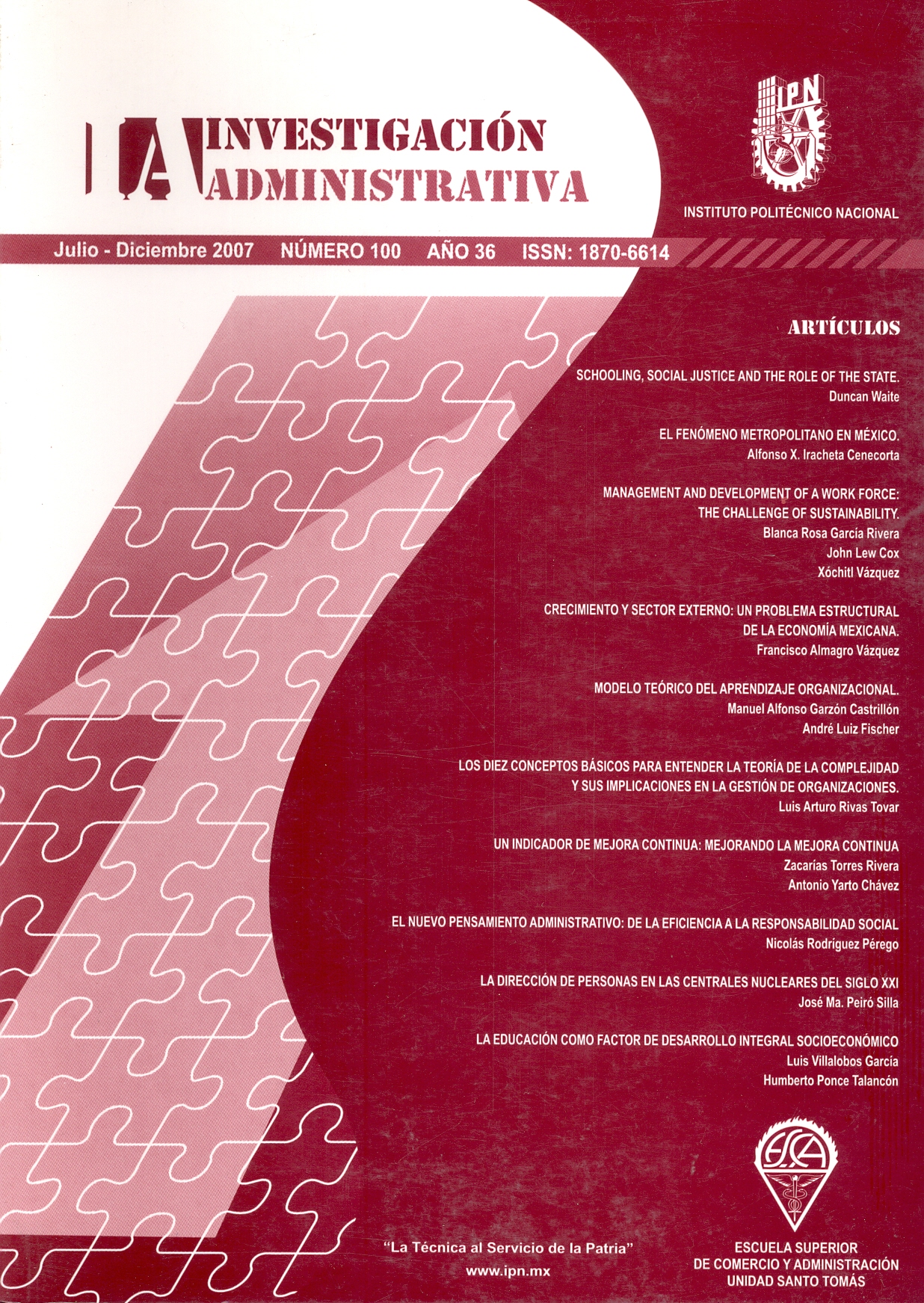Management and development of a work force: the challenge of sustainability
Contenido principal del artículo
Resumen
his paper looks at an Small Médium.size Enterprise (SME) in México, a maquiladora site whose work forcé possesses most of the typical characteristics noted in them. The plant in the study is an assembly plant for medical devices; thus, the incentive to achieve a high level of quality in the output is intense. Yet, the plant's work forcé has an annual turnover rate that is over one hundred percent, and works under all the burdens (marital, education, gender). Under these conditions, attempting to sustain a successful company to aid in the building of an economy is a difficult task. Based on an intensive study of the workers and their personal attributes, this paper looks at the issues, both visible and hidden, in the management and development of such a work forcé, discusses the impact on the operation of the company, and makes suggestions for improvement of the workers1 lot; thus, the company; thus, the country's economy.
Detalles del artículo

Esta obra está bajo una licencia internacional Creative Commons Atribución-NoComercial 4.0.
Citas
Arrióla Rodrigo, 1993 “The North American Free Trade Agreement and its implications for human resources management”, University of Colorado, Denver, Co., pp.35-37.
Bluedorn, A. (1982) A Unified Model of Turnover from Organizations. Journal of Human Relations, Vol. 35, No. 2, 268-272 © 1982 The Tavistocklnstitute.
Barajas, R. y Rodríguez, C. (1989) Mujer y Trabajo en la Industria Maquiladora de Exportación. México: Colegio de la Frontera Norte.
Carrillo, J. y Santibáñez, J. (1993). Rotación de Personal en las Maquiladoras de Exportación en Tijuana. México: Secretaria de Trabajo y Previsión Social / Colegio de la Frontera Norte
Cascio, W.F., 1991 “Costing Human Resources”, tercera edición, McGraw-Hill, New York, NYp.52.
Edwards, Rodé & Ayman, 1988 “The construct validity of scales in four leadership questionnaires”, Journal of General Psychology, 116(2) pp. 116-181.
English,W., Williams, S. & Ibarreche, S. (1989). Employee turnover in the maquiladoras. Journal ofthe Borderlands Studies, 4(2): 77-99.
Harley, B. & Zenteno, R. (1991). El carácter plural de la frontera norte de México: El caso del empleo urbano. Ponencia en el coloquio sobre población en la frontera Norte. El COLEF-SOMEDE.
Hope, L. & Hill, K. (1997). Employee work valúes and organizational attachment in North Mexican maquiladoras. The International Journal of Human Resource Management, 8 (4): 502-503.
Kras, E. (1989). Management in Two Cultures: Bridging the Gap Between U.S. and Mexican Managers. Yarmouth: Intercultural Press.
Levy, A. & Alcocer S. (1983). Las Maquiladoras en México. Fondo de Cultura Económica: México D.F.
Lucker, W. (1987). The Hidden cost of work turnover: A case study in the In-Bond Industry in México. Journal of Borderlands Studies, 2 (3): 1-10.
March, J. & Simón, H. (1958).Organizations. NewYork: Wiley.
Martin, T. (2001). Modelling the turnover process. The Journal of Management Studies, 261-263.
Miller, J., Hom, P. & Gómez-Mejía, L. (2001). The high cost of low wages: Does maquiladora compensation reduce turnover? Journal of InternationalBusiness Studies, 32(3): 586.
Mungaray A. (1990). Crisis, automatización y maquiladoras. Mexicali: Universidad Autónoma de Baja California.
Peña, Leticia, 2000, “Retaining a Mexican Labor Forcé”, Journal of Business Ethics, pp.123-131.
Quintero, C. (1997). Restructuración Sindical en la Frontera Norte-. El caso de la Industria Maquiladora. México: Colegio de la Frontera Norte.
Sarget, J. & Matthews, L. (1998). Expatríate reduction and mariachi circles. International Studies of Management &Organization, 28 (2); 77.
Teagarden, M., Butler, M. & Von Glinow, M. (1991). Mexico's maquiladora industry: Where strategic human resource management makes a difference. OrganizationalDynamics, 20; 34-48.

